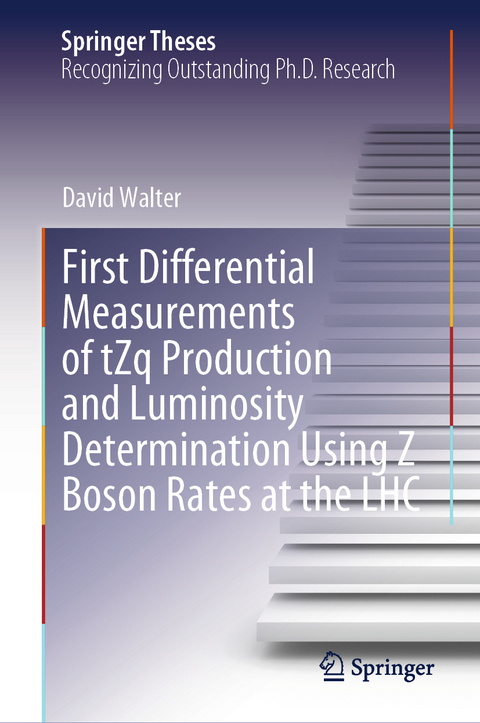
First Differential Measurements of tZq Production and Luminosity Determination Using Z Boson Rates at the LHC
Springer International Publishing (Verlag)
978-3-031-50930-8 (ISBN)
I studied physics at KIT in Karlsruhe, Germany with the main subjects on theoretical particle physics, experimental particle physics, and data analysis. In summer 2017 I joined the CMS experiment to work for my master's thesis project on improvements in deep neural network algorithms for the identification of jets with b quarks. I showed that by using novel machine learning techniques based on domain adaptation the difference between data and simulation can be mitigated. Afterward, I moved to Hamburg where I started my PhD at the DESY research center. My main project was the analysis of proton-proton collision data recorded by the CMS experiment, where I studied the production of a single top quark in association with a Z boson (tZq). During this time, I also co-supervised a graduate student on a related project. Today, I am a level 3 tX convener for CMS and organize by-weekly meetings and support and review analyses from the early stages. As the HepData contact person, I organize the data preservation of analysis results. In the past and present, I contribute to the CMS experiment in the group responsible for luminosity determination. I developed a novel technique of measuring the luminosity using Z bosons decaying into muons. The approach requires a deep understanding of the reconstruction, identification, triggering, and efficiency determination of munos. The method is also used to validate the luminosity recorded in the just-started LHC Run 3 data acquisition, where I take a supervising role. In my current position as a postdoctoral scientific researcher, I joined the effort for a precision measurement of the W boson mass, a parameter of the standard model that was recently measured with tension to theory predictions. To cope with the demanding conditions for the planned High-Luminosity LHC, new innovative and cutting-edge technology will be needed. In the context of the Phase-2 upgrade of the CMS experiment, I'm performing test measurements of silicon sensors for the new High Granularity Calorimeter (HGCAL).
Introduction.- Theoretical Foundations of Single Top Quark Physics at the LHC.- The CMS Experiment at the LHC.- Luminosity Determination Using Z Boson Production.- Measurements of Single Top Quark Production in Association With a Z Boson. Summary and conclusions.
| Erscheinungsdatum | 14.02.2024 |
|---|---|
| Reihe/Serie | Springer Theses |
| Zusatzinfo | XV, 194 p. 102 illus., 89 illus. in color. |
| Verlagsort | Cham |
| Sprache | englisch |
| Maße | 155 x 235 mm |
| Gewicht | 481 g |
| Themenwelt | Naturwissenschaften ► Physik / Astronomie ► Atom- / Kern- / Molekularphysik |
| Naturwissenschaften ► Physik / Astronomie ► Hochenergiephysik / Teilchenphysik | |
| Schlagworte | Luminosity determination • Quantum Chromodynamics • quantum field theory • Top Quark • top quark - Z-boson interaction |
| ISBN-10 | 3-031-50930-7 / 3031509307 |
| ISBN-13 | 978-3-031-50930-8 / 9783031509308 |
| Zustand | Neuware |
| Haben Sie eine Frage zum Produkt? |
aus dem Bereich


